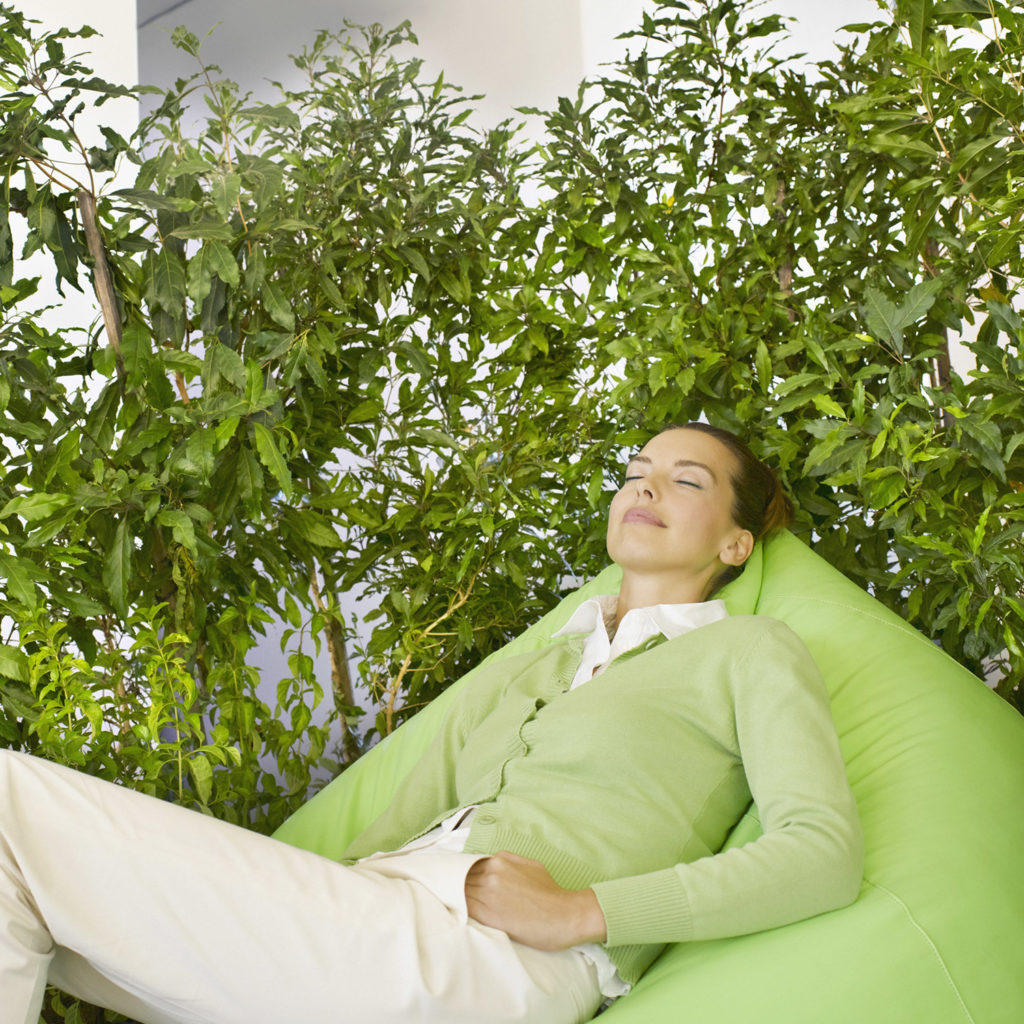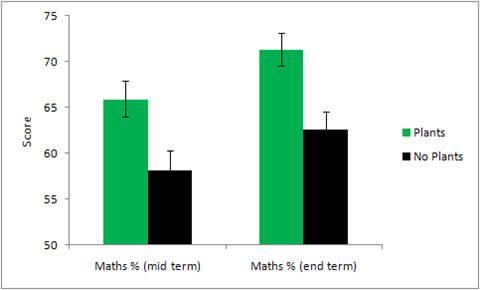
The benefits of indoor plants through a professional interior plantscaper is the easiest way to improve your office. A simple green space can add as much to the bottom-line as a major cost-cutting exercise. In fact cost cutting by removing indoor office plants can actually have the opposite effect and increase costs due to staff “mal-being”.
University research shows that the benefits of indoor plants include:
Through the benefits of indoor plants, you will:
It is not rocket science. Man evolved in the forests and grass plains of Earth. We evolved to like vegetation because it means food and shelter. Now we spend 90% of our time indoors, totally removed from our natural environment. Patients in hospital recover sooner when there is a garden to walk in and why do we holiday in the country ?
The latest research on the benefits of indoor plants in schools has just been made available from the University of Technology Sydney.
The trials found that classroom plants consistently led to improved performance in spelling, mathematics and science, ie, across the curriculum, for possibly a variety of interlinked reasons. And from our discussions with staff at the three schools, there seemed to be unanimous agreement among teachers and students that plants in the classrooms improved their appearance and ‘ambience’.
The full article on the benefits of plants in schools.
Figure 1. School A: Comparison of changes in mid-term and end of term mathematic scores in classes with and without plants. (Means and SE; n = 69–72.)

Figure 1. School A: Comparison of changes in mid-term and end of term Mathematic scores in classes with and without plants. (Means and SE; n = 69–72.)
You can enhance productivity by 12% while reducing the mounting problem of workplace stress. Additionally, with plants you can reduce busy office noise, lessening the frequency of workplace distractions.
Studies from Oxford University indicate that office plants have positive effects on employee perceptions and dispositions, which may lead to increased employee retention.
Plant-filled rooms contain 50% to 60% fewer airborne moulds and bacteria than rooms without plants. By cleaning workplace air with plants, you can significantly reduce sick leave expenses.
While indoor office plants cost less than most alternative corporate decorating choices, they offer a guarantee of positively enhancing perception and your corporate image.
Until recently, we lacked the research necessary to clearly demonstrate the economics between plants, employees and bottom line corporate America. However, we now have access to data that is shifting the way businesses think about plants in the workplace.
In a study conducted by Dr. Virginia Lohr of Washington State University, emotional states, pulses and blood pressure readings were measured as participants reacted to randomized computer symbols. Plants present and plants not present were the only variables that study participants experienced.
The study findings indicated that participants in the presence of plants were less stressed and reacted 12% more quickly to computer symbols than those in the absence of plants.
Studies from Oxford University have also shown that plants absorb noise in busy office environments. By cutting down on the audible elements of a busy work place, plants can reduce employee distractions. This may result in increased productivity.
Less stress and cleaner air reduce employee down time – a direct benefit.
Common but dangerous micro-organisms and toxins can become concentrated in sealed, energy-efficient office environments. In fact, research published by Bio-Safe Incorporated confirms that energy-efficient office structures are often 10 times more polluted than the air outside.
Lacking an appropriate exchange of fresh outdoor air for stale indoor air, sealed office environments can lead to a marked increase in employee illnesses from poor indoor air quality. However, research has shown that plant-filled rooms contain 50% to 60% fewer airborne moulds and bacteria than rooms without plants. By absorbing office pollutants and emitting clean oxygen, interior plants can cut down on sick leave expenses considerably – a direct benefit.
According to a study out of Washington State University, plants release moisture in an office environment, creating a humidity level matching the recommended human comfort range of 30% to 60%. A comfortable office environment is more conducive to productivity.
In addition, when office air humidity falls below the recommended range, materials such as wood can become cracked. When air humidity exceeds the recommended range, condensation on windows and exterior walls can cause structural damage. By keeping building air humidity levels within proper comfort range, interior plants can help avoid costly repairs.
Data from surveys conducted by Unifi Network of Westport, Conn. Indicates that to attract and retain top employees, workplaces must include aspects of what inspires those employees during their off time. Recent Gallop polls indicate that two-thirds of the American work force cite gardening as their favourite off-time hobby. It logically follows, then, that plants should be included in the workplace. Studies indicate that plants in the workplace may increase employee retention – a direct benefit.
Studies out of England’s Oxford Brookes University conclude that employees perceive buildings with interior plants as more expensive-looking, more welcoming and more relaxed. Employees with positive perceptions of their workplace are less likely to seek employment elsewhere.
Positive perceptions increased at companies that added green space to their office interiors.
Plants are green but modern planters are any colour you like. We discuss colour in Creative Ideas.
This is interesting. You can plug your own figures into our costing spreadsheets and get an approxination on the cost and savings.
By outsourcing interior landscaping services, key office staff and management are able to focus more completely on tasks specific to company goals. Through outsourcing, the visual and bottom-line advantages of your property can be raised significantly.
The benefits of indoor plants in the workplace far out-weigh the costs associated with maintaining them. No longer just a pretty face, plants are now hard at work in offices through-out Australia.